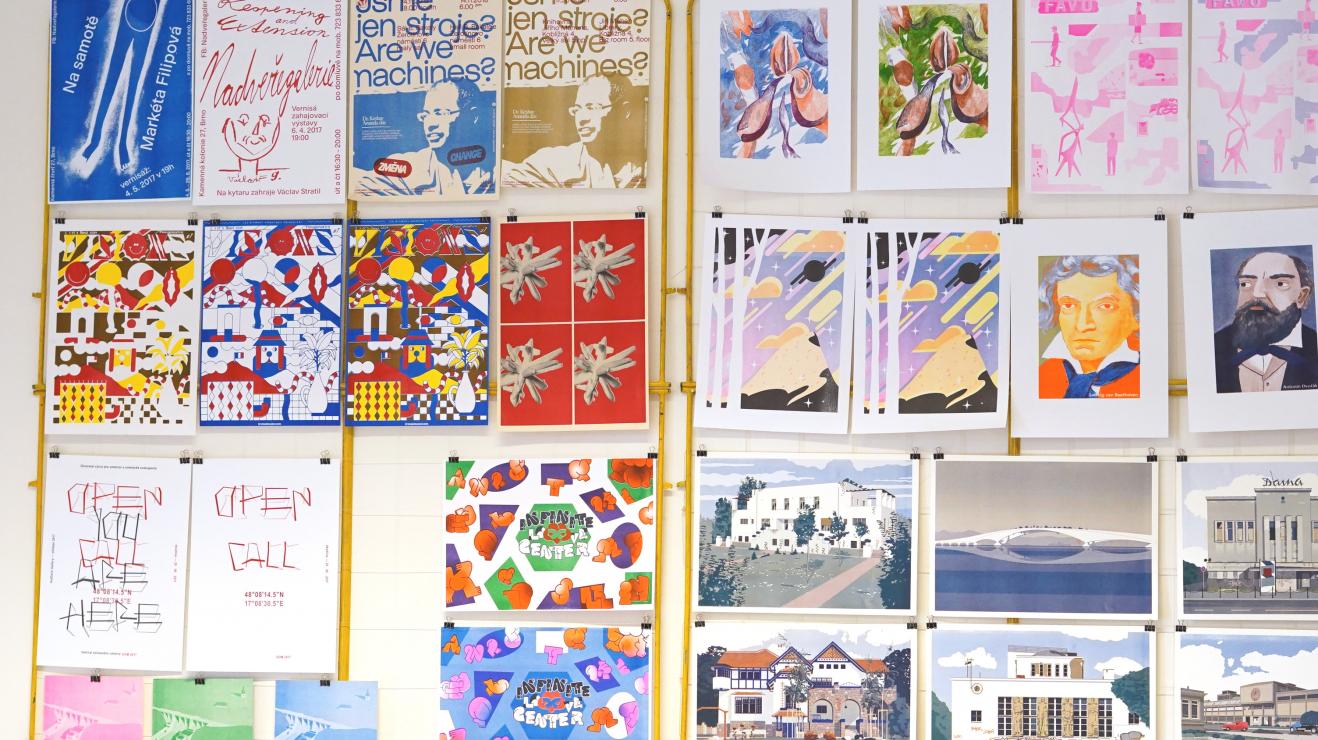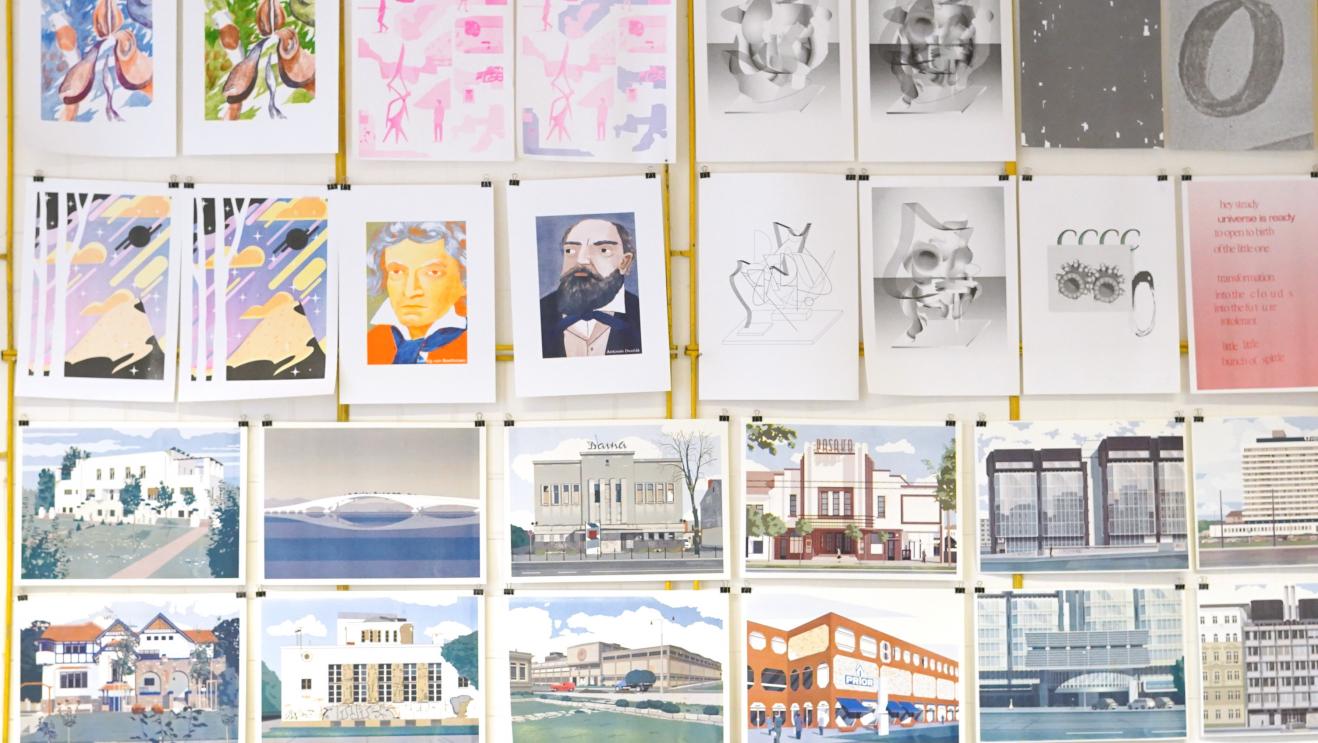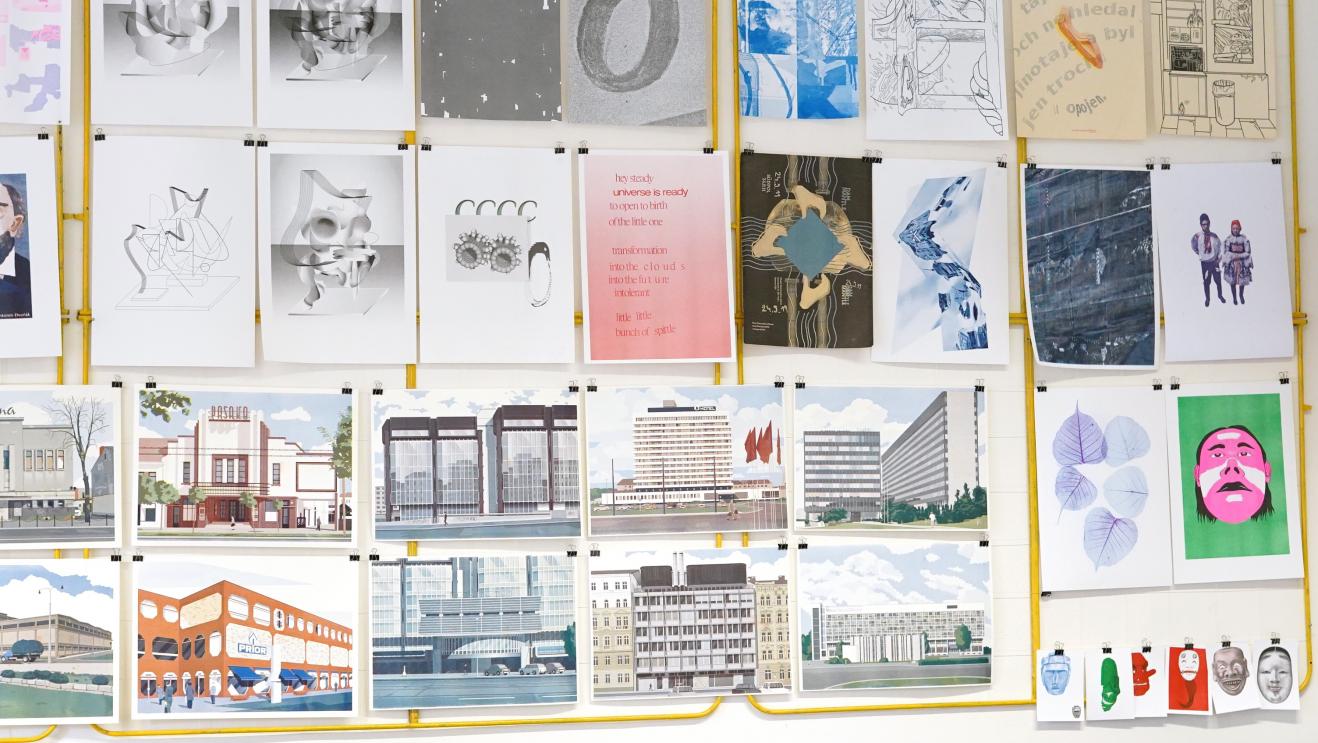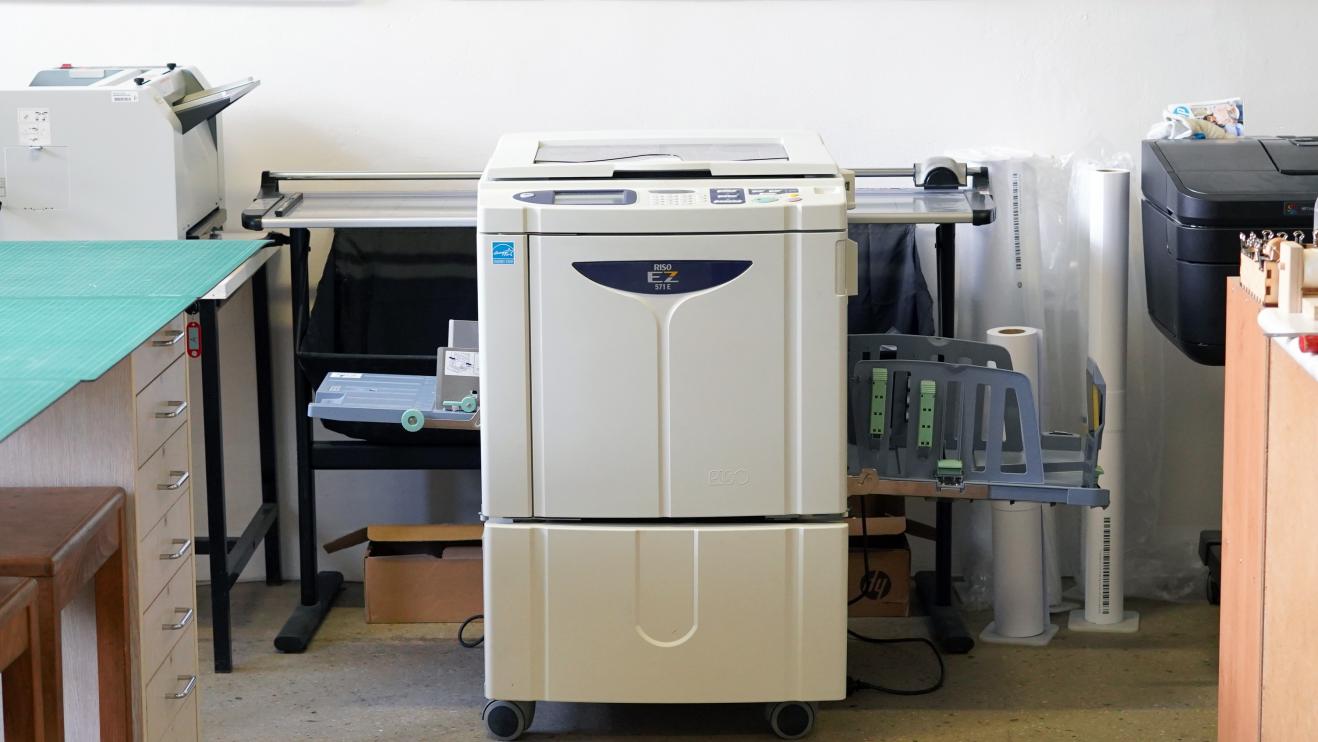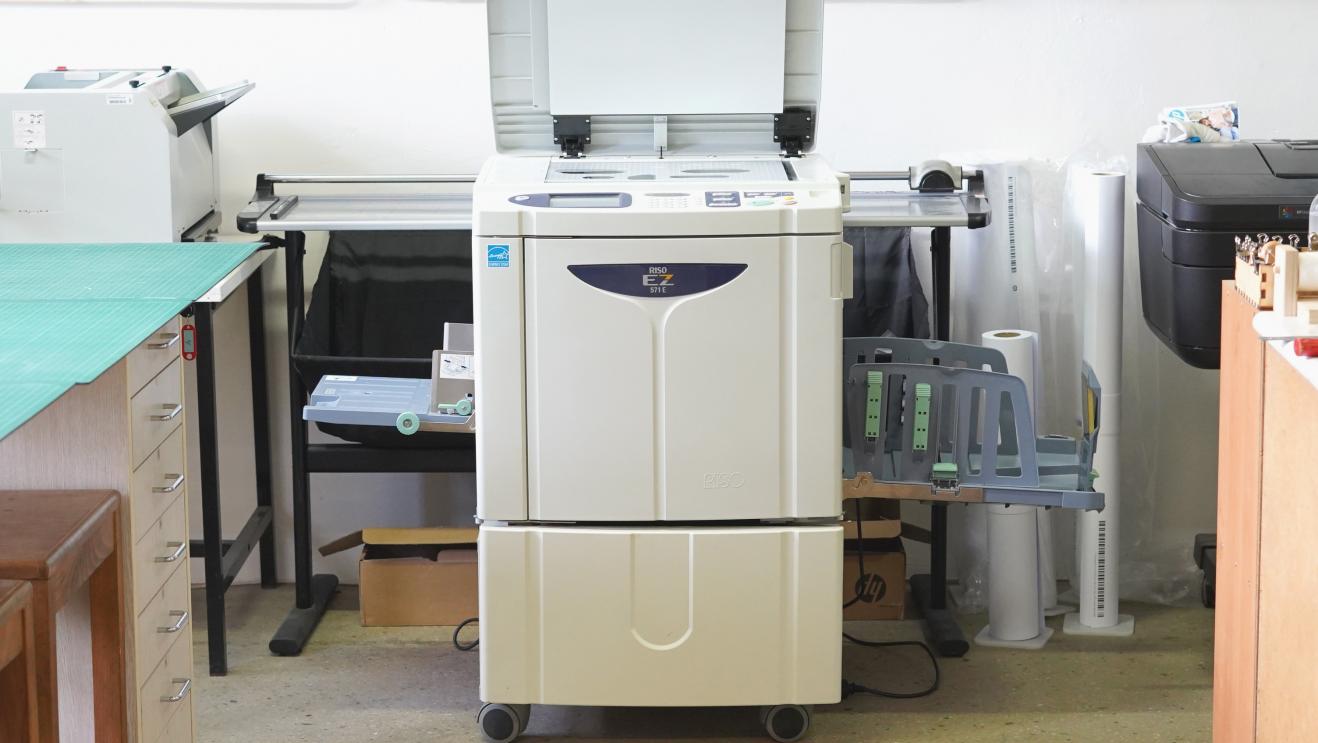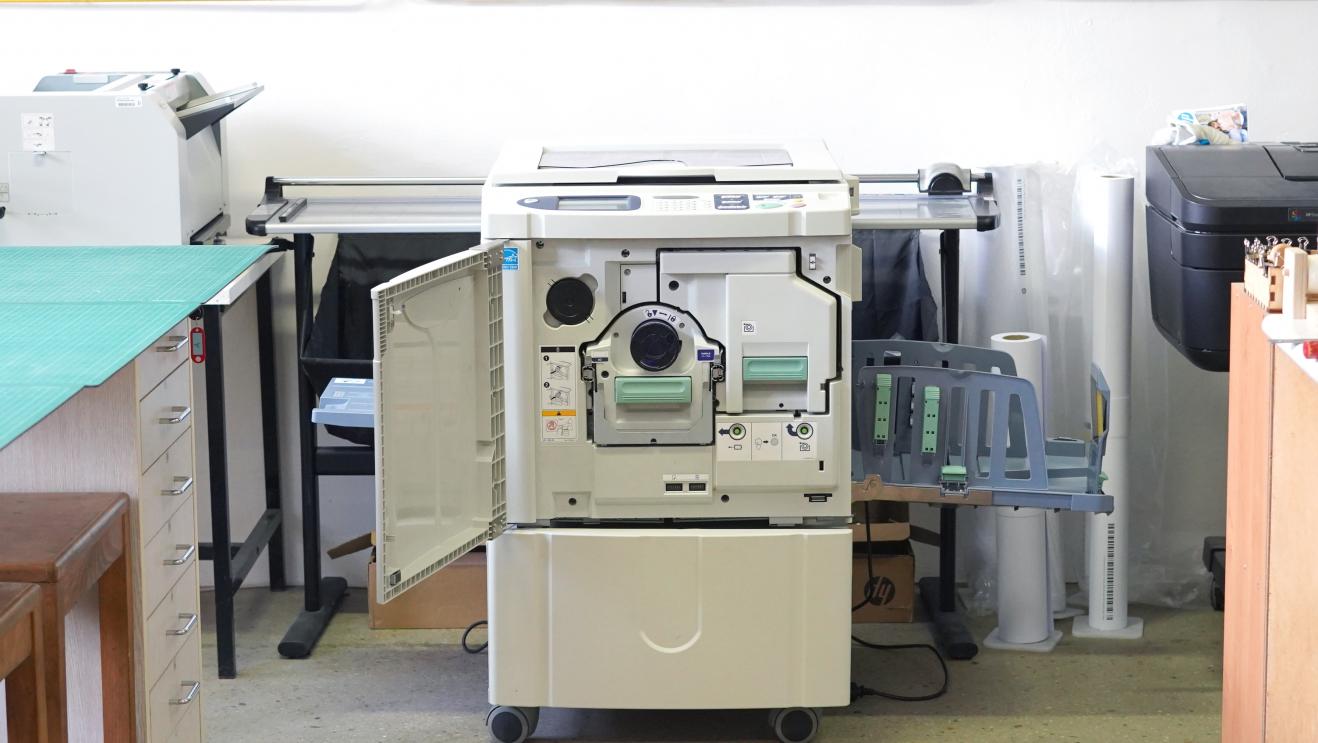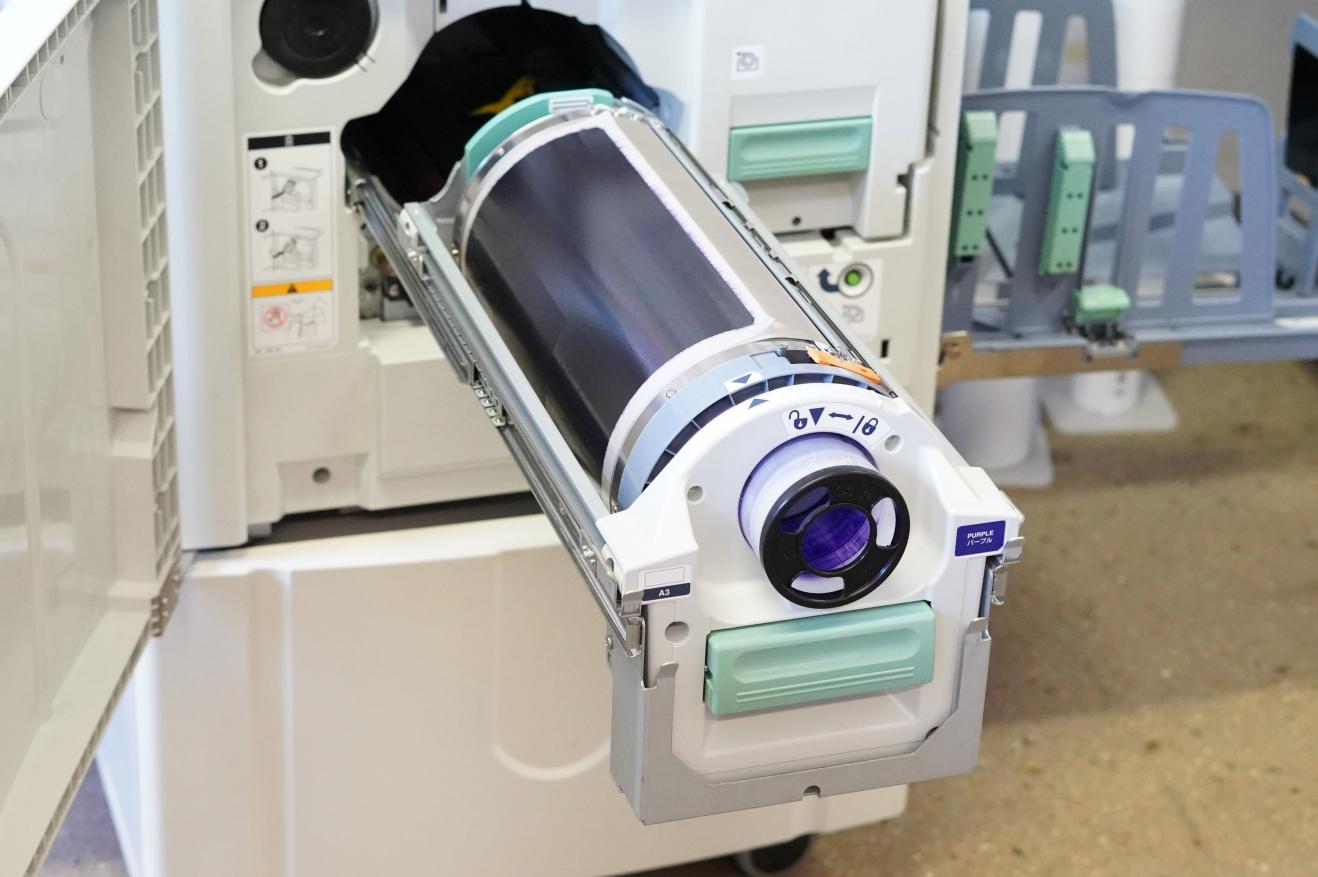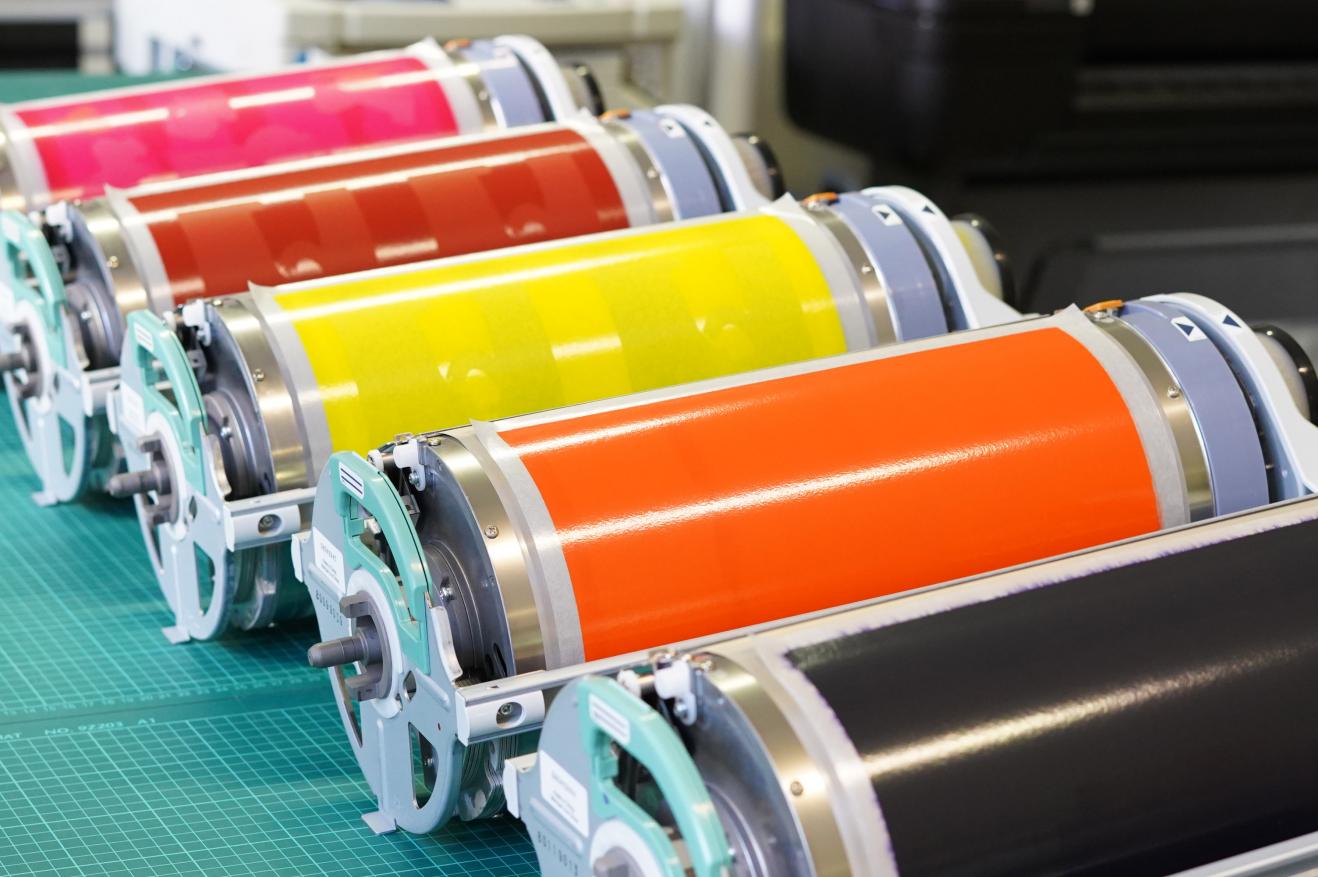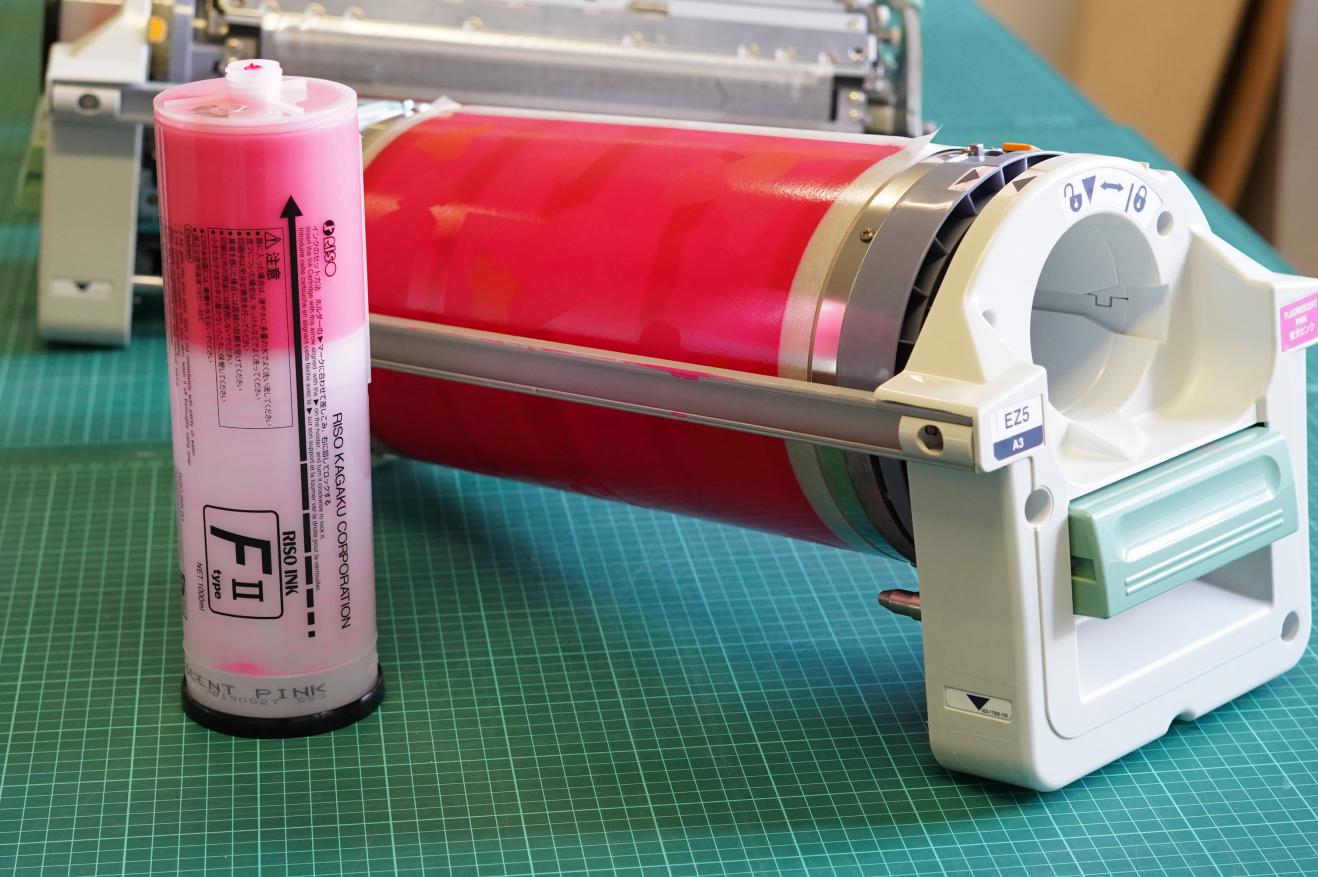RISO Lab FaVU
The RISO Lab FaVU primarily serves students and faculty staff in fulfilling tasks related to study, teaching, and faculty promotion. It enables the creation of low-cost original prints and publications.
The laboratory has two digital duplicators. The first is the RISO EZ 571E – a single-cylinder (single-color) machine. The second is the RISO MH 9350E – a double-cylinder (two-color) duplicator.
Finishing equipment for binding publications and author's prints is also available. Printing is possible from A6 format up to a print area of 291×413 mm (reduced A3 format). Finished prints can be bound in V1, V2, V4 book bindings and, upon agreement, also in V8 bindings. Details on the individual types of bindings can be found on the Types of Book Bindings page.
The free capacity of the FaVU RISO Lab is also used to fulfill orders for related cultural institutions.
What is a risograph?
A risograph is a printing machine developed in Japan in the 1980s by Riso Kagaku Corporation and was originally used as a copier. Although the machine is very similar to a copier, it works completely differently. The special feature of this copier is that it works using a stencil printing process and requires a separate color roller for each color. Risograph has gained popularity worldwide among low-cost printers for its relatively low purchase price, inexpensive operation, speed, and interesting print quality, and has become a popular printing technique for author prints, posters, zines, brochures, and publications.
How does risography work?
A risograph can best be compared to the screen printing process. In risography, the original (template, your artwork) must be divided into individual colors, just like in screen printing. A separate grayscale template must be created for each color.
The template can be prepared either analogically (scanned directly into the risograph scanner) or digitally transferred from a computer. In this process, the template is burned into a fine film, called a matrix. This film, made of hemp fiber or banana leaf fibers, is wound onto a colored printing cylinder during printing.
In places where there is a black area on the template, the matrix is permeable to ink. During printing, the cylinder rotates and the ink is pressed through the matrix onto the paper. The black areas of the template are thus transferred as a color print.
To print more than one color, this process must be repeated for each color separately. Each color requires its own stencil, and the paper must pass through the printer again.
Because RISO colors are not completely opaque, layering them can produce interesting and unexpected color combinations and shades.
Why print with RISO?
RISO is environmentally friendly
Risography is a gentle and environmentally friendly printing process. The inks are based on soybean oil and rice bran, and do not release any toner particles. The masters are made from hemp fibers or banana leaves, and we print on FSC®-certified materials. In addition, the printing process itself consumes less energy than other types of printing because, unlike conventional copiers and toner printers, the ink does not need to be heated.
RISO is efficient
The price/performance ratio of risographic printing is extremely favorable—the more copies you make, the lower the price per copy. In addition, printing is very fast and the entire process does not use harmful chemicals.
RISO is art
Risography is no longer just about printing text. Thanks to its specific characteristics, it is becoming a popular and sought-after artistic tool. It is used by graphic artists, typographers, designers, illustrators, publishers, and other artists as a unique means of expression.
Risograf však také umí překvapit a vyprodukovat různé nechtěné efekty
Teaching at RISO Lab FaVU
RISO Lab teaches the subjects RISO Lab and Original Illustration.
RISO Lab
Students will gradually, theoretically, and practically, get acquainted with printing on Risograph. They will receive the necessary information about the differences between different printing technologies. They will learn how to create templates and operate the Riso EZ 571E and MH 9350E printing machine. The course also includes basic work with Adobe Photoshop software which allows students to create a template from the image template for trapping four colors, and Adobe InDesign, where they will deepen their skills in preparing and exporting a document for printing on Risograph. The main goal of the course is to support students' creative activities in the field of creating low-cost original prints and publications, as well as to provide an assistance in their artistic development.
Original Illustration
The course is designed for students who have already been introduced to illustration and have a basic knowledge of pre-press preparation. Advanced knowledge of Adobe software is assumed. Students will learn about current trends in illustration through the work of contemporary international artists. Their work will be presented through practical examples of publications and zines produced mainly by Risograph or digital printing technologies. An important aspect is the development of students' individual projects within series or cycles. The emphasis is on long-term projects. During the semester, students will have the opportunity to consult the form of their projects in the Book Workshop of the FaVU BUT, where they will also be able to print and bind them at the end.The main goal of the course is to support the creative activity of students in the creation of low-cost original prints and publications, as well as assisting in their artistic development.
